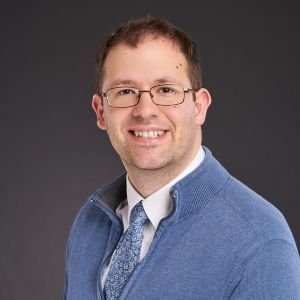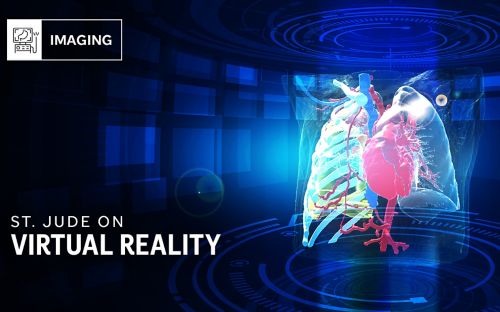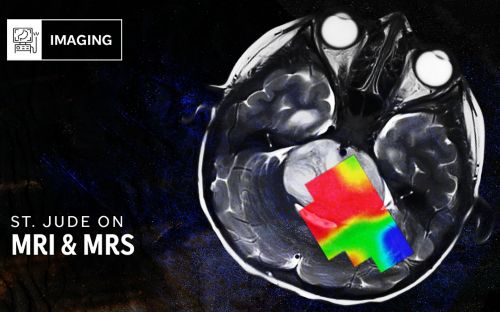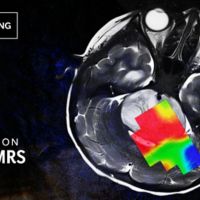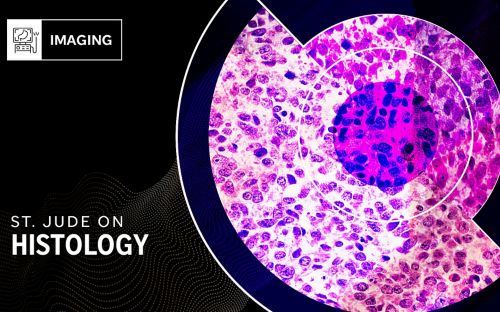Shifting the PARADIGM towards individualized gene editing therapies

The new St. Jude PARADIGM effort aims to create a scalable platform to cure rare blood disorders with individualized gene editing.
Many genetic diseases lack cures. Often, they are classified as rare diseases which affect only a small number of people worldwide, hampering efforts to create “off-the-shelf” remedies. This is especially relevant to blood disorders caused by rare mutations.
Pharmaceutical companies are disincentivized from producing therapies for these rare diseases, making matters more complicated, as there is no profit to be gained from treating such small groups. Academic research institutions have filled the gap somewhat, but the small patient group size makes conventional clinical trials challenging. These issues combined have become significant barriers to finding cures for genetic blood disorders and other conditions.
A new approach by St. Jude
“Many rare disease mutations cause hematologic, or blood-related, diseases such as bone marrow failure disorders,” said Shengdar Tsai, PhD, St. Jude Department of Hematology. “While individually rare, they’re collectively common, affecting hundreds of thousands of people worldwide. We envision a future in which you might be able to use CRISPR-based genome editing as a platform directed by custom RNA molecules to target and treat individual disease-causing mutations routinely.”
St. Jude has launched a new initiative, the partnership to advance the development of individualized genomic medicines (PARADIGM), to directly address blood disorders caused by rare genetic mutations. The goal is to establish a scalable platform to create bespoke gene editing therapies for these patients whose disorders are otherwise incurable. It will be led by experts in bone marrow failure syndromes, hematology and genome editing: Mitchell Weiss, MD, PhD; Shengdar Tsai, PhD; Marcin Wlodarski, MD, PhD; and Senthil Bhoopalan, MBBS, PhD, all of the St. Jude Department of Hematology.
“PARADIGM represents an exciting opportunity to leverage St. Jude’s expertise in genome editing and bone marrow failure syndromes to develop new, potentially life-saving treatments for patients with these devastating diseases,” Weiss, the senior investigator on the project, said.
Focusing on bone marrow failure syndromes
PARADIGM is a partnership to develop precise genetic therapies for bone marrow failure syndromes. These syndromes can only be treated by risky hematopoietic stem cell transplants, which are often inaccessible to patients due to the difficulty of finding a matching donor. The field needs a new approach, and the combination of new technology and biological insights in the last decade have created an opportunity to address these diseases.
“Bone marrow transplantation has been the only curative treatment we’ve had for these syndromes for almost 50 years,” Wlodarski, director of the St. Jude Bone Marrow Failure program and a physician-scientist who studies genetic predispositions to bone marrow failure syndromes, said. “All other improvements in that time have been supportive. Now, thanks to genome editing, we have a chance to create new curative treatments. Since most of these conditions are monogenic, if we can mobilize a patient’s hematopoietic stem cells and then use genome editors to find and replace the bad mutation, we can potentially cure them.”
While the PARADIGM project will need to show the viability of this approach, there is reason to believe it will work. Some patients experience a natural mutation in their hematopoietic stem cells — called a somatic genetic reversion — that restores the normal functioning of the cells. This “natural gene therapy” provides a proof-of-concept that genetically correcting a disease-causing mutation is a viable treatment route.
Performing the experiments that will fuel PARADIGM requires both physical infrastructure and disease expertise. St. Jude has a well-developed bone marrow failure treatment program led by Wlodarski. The institution also includes experts in several major known types of bone marrow failure — Wlodarski is a world-leading expert in SAMD9L/SAMD9L and GATA2 mutations, his labs also recently found a new bone marrow failure syndrome caused by mutations in a gene (RPA1), and Bhoopalan researches Diamond Blackfan Anemia.
Another advantage of St. Jude is the accessibility of testing and the many standard assays and protocols already defined for these patients. Physicians at the institution regularly see patients with bone marrow failure disorders, giving them practical experience and insights into the disease, from diagnosis to stratification to treatment. They also have the benefits of working at a globally recognized research hospital.
“St. Jude has the ability to provide testing based on patient needs,” said Wlodarski. “When we need a quick set of tests to lead to patient stratification, we don’t have to go through a potentially slow or arduous process with an insurance provider. In addition, we are connected to the global community of experts with unpublished practical knowledge of treating patients with these rare conditions.”
Such international connections will be critical to advancing the PARADIGM project into the clinic.
The final resource at St. Jude is the expertise in genetic analysis and genome engineering. St. Jude has a large biobanking effort for bone marrow failure syndromes and is in the process of finding novel genes, such as RPA1, that cause these disorders. Armed with that information, researchers can move on to finding ways to correct those mutations and treat or cure these diseases.
PARADIGM: treating genetic diseases
“Our long-term vision is to develop individualized curative therapies for patients with inherited hematopoietic disorders,” Bhoopalan said. “PARADIGM is a preclinical phase of this vision, which will develop a platform to rapidly generate human cellular models of blood-disease-causing mutations and identify and optimize genome editing strategies such as base editors and prime editors.”
The processes for isolating and conducting gene editing on hematopoietic stem cells (HSCs), which give rise to all other blood cells, are well-known procedures. Scientists at St. Jude have extensive experience modifying HSCs, especially for the most common genetic blood disorder, sickle cell disease (SCD). A single mutation causes SCD, and St. Jude scientists have studied multiple editing approaches to treat and cure it, such as Cas9 nucleases, base editing and prime editing. PARADIGM builds on that experience — from developing the theoretical underpinnings of gene editing technologies to creating the physical infrastructure to edit patients’ blood stem cells.
The key to PARADIGM is developing a system to quickly show proof-of-concept for potential gene therapies for multiple genetic blood disorders. This includes finding a gene editor capable of safely and effectively fixing the patient’s specific causative mutation, isolating patients’ HSCs, modifying the HSCs, then testing for safety and efficacy.
A “guide” to ensure safety
To understand safety, Tsai has developed a widely adopted system for high-throughput discovery of off-target genome edits. The technology, genome-wide, unbiased identification of double-strand breaks enabled by sequencing (GUIDE-seq), provides a cell-based method to find genome-wide editor activity. This type of activity has been used to assess safety for Food and Drug Administration (FDA)–approved clinical applications of genome editing.
To improve efficacy and targeting range, Tsai’s group has developed a human cell-based directed evolution system to enhance the available selection of genome editors. Traditionally, bacteria are used to test for new editors. By using a human cell-based system to screen, the authors have already found a Cas9 with greater activity. They hope to expand this system to find best-in-class editors for specific mutation classes in human cells without the limitations of using a bacterial system.
“Most protein engineering work is done in bacterial systems, so this is a big difference from the conventional approach,” Tsai explained.
In addition to selecting the right editor, to ensure safety, the scientists must also show that it edits the targeted sequence and has the desired effect without deviating or causing off-target effects. PARADIGM will develop high-throughput capabilities for assessing the safety or genome-wide activity of lead therapeutic editors and targets with the help of advanced liquid handling automation.
Optimizing the gene editing process for blood disorders
A major barrier to creating bespoke gene-editing technologies is the time and effort required. Scientists have spent over a decade creating gene-editing treatment approaches for SCD. Individualized genome editing must be faster and easier to implement to succeed clinically.
St. Jude researchers are turning to automation and machine learning to accelerate discovery to address the sheer volume of work for each case. They are also implementing high-throughput systems for massively parallel screening to identify the most useful gene editors and the best targets.
“We’re building on our expertise in the genome-wide activity of editors to develop large-scale, high-throughput, automated methods to evaluate them,” Tsai said. “That improved understanding will enhance our ability to engineer even better editors. We may also be able to use machine learning from these data to build models that will help predict the best DNA sequence targets within a specific disease-causing mutated gene.”
PARADIGM will focus first on gene mutations important for bone marrow failure disorders because they are excellent targets for gene editing. Many of these disorders result from mutations in the HSCs that make all other blood cells. Bone marrow failure disorders prevent HSCs from making blood (red blood cells, white blood cells and platelets) and reproducing efficiently. Therefore, fixing a disease-causing mutation gives HSCs a competitive advantage, enabling them to outgrow the cells still carrying the unedited gene.
“A single corrected stem cell can give rise to the entire blood system,” Tsai said. “That tells us that for bone marrow failures, even low frequencies of genetic correction may be enough to really help a patient, making this an ideal place to start.” This spontaneous gene correction has been shown by Wlodarski’s lab, which studies the mechanisms of this so-called “genetic reversion” in which stem cells acquire genetic changes that make them healthier and improve patient’s symptoms. His lab found patients in whom a single stem cell can cure the patient’s bone marrow and lead to long-lasting clinical remission. This is common in SAMD9/SAMD9L disorders and telomere syndromes, as recently published by Wlodarski’s lab.
“The rare bone marrow failure disease community is small and tight-knit, and we look forward to engaging with them and learning from them as we begin work on this project,” Bhoopalan said. “We are thrilled to work with a multidisciplinary team and partner with patients and their families to develop safe and effective personalized curative therapies.”
PARADIGM will tackle N-of-1 clinical trials
While much of the work for PARADIGM will be conducted in the laboratories of the primary investigators, any therapeutic product used in patients must be shown to be safe and effective in clinical trials. The barrier of rare disease research cannot overcome the low number of applicable patients, so the project must also align with the FDA to innovate new regulatory approaches.
“The most challenging part will be the development of a regulatory and ethical framework to prioritize diseases and design future N-of-1 clinical studies,” Bhoopalan said. “These will have to be developed in close collaboration with disease experts across the globe, federal regulatory bodies, patient advocacy groups and ethics experts.”
Researchers across the genome editing field are tackling the same challenges — navigating regulatory approvals for rare genetic diseases at scale, especially using CRISPR and RNA-based systems.
“Currently, every new molecule has to go through the entire process of an investigational new drug application,” Tsai said. “It requires an enormous set of assays and paperwork. We’re probing at what point molecules are so similar they can be considered a new version that can be advanced in a streamlined manner rather than a completely new drug.”
Again, St. Jude has experience navigating novel regulatory approvals, and PARADIGM promises to expand the institution’s expertise by learning from other experts across the research enterprise.
The future PARADIGM begins now
The PARADIGM project has just launched. It is currently planned for the next five years, during which time genome editing technology is predicted to advance rapidly. Throughout the project, St. Jude PARADIGM investigators will remain at the forefront of the evolving technology and methods to find safe and effective ways to edit HSCs.
“Despite remarkable advancements in new treatments for many human diseases, there has been negligible progress in bone marrow failure disorders," Wlodarski said. "However, current observations of natural gene correction in patients combined with the emerging genome-editing technologies provide a unique opportunity to develop novel gene-based therapies for our patients.
“PARADIGM will establish St. Jude as a leader of individualized genome editing for bone marrow failure disorders,” Bhoopalan said. “The program exemplifies the potential for bidirectional translation of research from bench to bedside and back at St. Jude.”
Cures for blood disorders and other diseases caused by single genetic mutations are on the horizon due to projects such as PARADIGM. Tsai imagines:
“In the future, patients might receive a genetic diagnosis at the doctor. They may find a mutation that is predicted to cause disease. Then, the physician might be able to order a routine genomic medicine designed to fix that specific mutation. They could essentially prescribe off-the-shelf genome editing treatments and have some assurance of their safety and efficacy to treat any given genetic condition.”
“That’s the future we envision and are working towards together,” he added.
